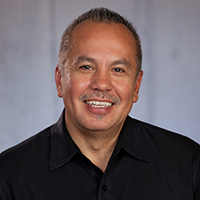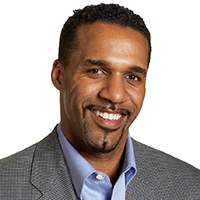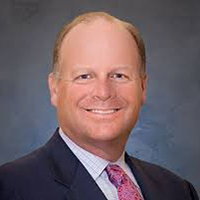The credit union industry strove in 2016 to keep up with growing demands from regulators and consumers alike. So, what lies in store in the next 12 months?
Here, eight industry players take a look back and then forward while sharing their thoughts on digital transformation, innovation, and compliance.

Ben Morales is the CEO of QCash Financial, a CUSO and provider of small-dollar loan technology, and chief technology officer of Washington State Employees Credit Union ($2.6B, Olympia, WA). |

Louise Steller is vice president of product strategy at Ensenta, a provider of enterprise-wide SaaS solutions for mobile and online deposits and payments, in Redwood Shores, CA. Read more |

Robb Gaynor is co-founder and chief product officer at Malauzai, a provider of mobile banking solutions, in Austin, TX. Read more |

Marcell King is chief revenue officer at Payveris, a provider of digital payments solutions, in Rocky Hill, CT. Read more |

Ted Bilke is president of Symitar, a provider of credit union core processing platforms, in San Diego, CA. Read more |

Chuck Fagan is president/CEO of PSCU, a CUSO and provider of credit union card processing and other services, in St. Petersburg, FL. Read more |

Bruce Lowthers is an executive vice president and president of the Global Retail Payments Division for FIS, a provider of financial services technology and outsourcing, in Jacksonville, FL. Read more |

Blake Rosenthal is executive vice president of debit and network solutions for Mastercard, the global card brand, in Purchase, NY. Read more |
QCash Financial On Cultural And Compliance Changes
 Ben Morales is the CEO of QCash Financial, a CUSO and provider of small-dollar loan technology, and chief technology officer of Washington State Employees Credit Union ($2.6B, Olympia, WA).
Ben Morales is the CEO of QCash Financial, a CUSO and provider of small-dollar loan technology, and chief technology officer of Washington State Employees Credit Union ($2.6B, Olympia, WA).
What were the most important developments this year in the credit union industry?
Ben Morales: The evolution and enforcement of new regulations. WSECU saw new regulation coming with the CFPB and formed a compliance CUSO with local credit unions to share the increasing compliance costs.
One of the most interesting and exciting developments was seeing the industry’s largest trade association initiate grassroots innovation around distributed ledger. I don’t know the future for the CU Ledger initiative, but it’s a good sign that everyone is adapting, taking some risk, and innovating.
How is the industry embracing digital transformations?
BM: If you ask 10 people what the definition of digital transformation is, you’ll get 10 different answers.It’s not an app or a website it’s a cultural and organizational change. Digital is everyone’s responsibility and all must work in lock-step to deliver a low-effort experience that leverages social, mobile, data, and cloud computing. Our ability to meet members where they want to engage with us is dependent on our ability to make the transformation.
How is the industry evolving? What can we expect to see in 2017?
BM: I anticipate increased pressure to adapt and evolve.This pressure will come from members, competitors, and regulation.
Security and privacy will become a focus for members and will be one more brand attribute to manage.
How can credit unions balance innovation and compliance in 2017?
BM: There are innovation opportunities in all areas of change. Compliance is no exception. Rather than wait to see what the final regulation will be, take on potential changes in regulation as opportunities to explore and proof of concept potential solutions.
| BEN MORALES, CEO, QCASH FINANCIAL. | LOUISE STELLER VP OF PRODUCT STRATEGY, ENSENTA. | ROBB GAYNOR, CO-FOUNDER & CPO, MALAUZAI. | MARCELL KING, CHIEF REVENUE OFFICER, PAYVERIS. |
| TED BILKE, PRESIDENT, SYMITAR. | CHUCK FAGAN PRESIDENT/CEO, PSCU | BRUCE LOWTHERS, EXECUTIVE VP & PRESIDENT, FIS. | BLAKE ROSENTHAL EVP OF DEBIT AND NETWORK SOLUTIONS, MASTERCARD. |
Ensenta Sees Credit Unions Driving Innovation In Mobile
 Louise Steller is vice president of product strategy at Ensenta, a provider of enterprise-wide SaaS solutions for mobile and online deposits and payments, in Redwood Shores, CA.
Louise Steller is vice president of product strategy at Ensenta, a provider of enterprise-wide SaaS solutions for mobile and online deposits and payments, in Redwood Shores, CA.
What were the most important developments this year in the credit union industry?
Louise Steller: In the past year, credit unions have dramatically increased their adoption of new mobile and online banking solutions. Mobile banking is emerging as the preferred method of interaction between credit unions and their members.
We’re seeing credit unions wanting to mitigate risk, minimize compliance concerns, maximize efficiency, and provide better funds availability to their members. In fact, many credit unions now have higher mobile deposit limits and faster funds availability than competing banking alternatives in the same market.
Higher deposit limits are leading to significant organic growth in terms of transactions and dollars deposited. Members in select segments are gaining faster access to the funds they deposit based on configurable hold policies and advanced risk analytics. As technology continues to change, credit unions are keeping the focus on their members by providing more engaging and tailored solutions.
How is the industry embracing digital transformations?
LS: The growth in mobile banking and mobile deposits highlights how the industry is successfully embracing digital transformation. Credit unions are increasingly focused on driving transactions through lower cost mobile platforms; not only as a big cost-saver but also to meet the needs of a growing mobile-first member base.
In this vein, credit unions are increasingly seeking to deliver digital solutions focused on a smart, interactive, and personalized customer experience.
How is the industry evolving? What can we expect to see in 2017?
LS: The industry is evolving toward real-time API-enabled solutions. We expect this trend to take off in 2017. For example, we are seeing more and more credit unions differentiate their offerings from bank and non-bank competitors by posting deposits to their core in real time. Members love it. Seeing the deposit immediately online builds trust.
Similarly, credit unions are working with their mobile providers to leverage other APIs to quickly connect to third-party services such as check guarantee and geolocation.
On a separate note, we are also seeing a growing interest by credit unions in small business deposit and payment solutions. They want enterprisewide solutions with simple, mobile-like user interfaces that work seamlessly across desktops, mobile phones, and tablets with network-enabled check scanners.
How can credit unions balance innovation and compliance in 2017?
LS: By adopting innovative cloud-based SaaS solutions, credit unions can more quickly update their platforms to meet ever-changing compliance standards than they could with legacy in-house software. For example, financial institutions that do not review mobile deposit discrepancies down to the penny often fail to fully credit account holders and may be fined.
With a SaaS solution, the fix for this issue might be a quick configuration change. With a legacy in-house solution, the fix is not so easy ? it requires a costly, time-consuming code-change ? during which the credit union is still at risk for compliance actions.
| BEN MORALES, CEO, QCASH FINANCIAL. | LOUISE STELLER VP OF PRODUCT STRATEGY, ENSENTA. | ROBB GAYNOR, CO-FOUNDER & CPO, MALAUZAI. | MARCELL KING, CHIEF REVENUE OFFICER, PAYVERIS. |
| TED BILKE, PRESIDENT, SYMITAR. | CHUCK FAGAN PRESIDENT/CEO, PSCU | BRUCE LOWTHERS, EXECUTIVE VP & PRESIDENT, FIS. | BLAKE ROSENTHAL EVP OF DEBIT AND NETWORK SOLUTIONS, MASTERCARD. |
Malauzai Sees Moves In Mobile Differentiation
 Robb Gaynor is co-founder and chief product officer at Malauzai, a provider of mobile banking solutions, in Austin, TX.
Robb Gaynor is co-founder and chief product officer at Malauzai, a provider of mobile banking solutions, in Austin, TX.
What were the most important developments this year in the credit union industry?
Robb Gaynor: For the broader industry, it was the continued effort to remain complaint with the expanding universe of regulation. For digital and mobile, it was the drive for differentiation.
Credit unions continue to focus on regulatory compliance. Compliance rears its head in the digital and mobile world in that, as a third-party vendor, the level of disclosure and compliance documentation has increased substantially.
The amount spent on compliance is also increasing, introducing potential delays to projects. To respond, credit unions are focused on differentiating their digital channels. More than 80% of credit unions over $100 million in assets have a mobile banking app. There’s a lack of differentiation. Many mobile banking apps look similar and have an identical set of features.
Now, credit unions are seeking differentiation. They cannot sustain a digital offering that makes them a commodity. They are seeking different designs and user experiences, more akin to what best-in-class mobile companies offer, such as Facebook and Amazon. They are also introducing more features to differentiate; for example, debit card controls like on/off switches or simple functionality like auto-balance and Touch ID for iPhones.
How is the industry embracing digital transformations?
RG: The industry is doing a good job transforming digital organizations. As explained above, they are first seeking differentiation, no longer settling for basic mobile and internet offerings, and the forward-thinking credit unions are driving change in the executive level. Appointing a chief digital officer who sits on the management team is a great example, and many credit unions are making these types of changes.
Some credit unions are also renewing their focus on the total member experience, creating an experience for members that bridges all channels. If anything, this is all going a bit too slow. The models are there to follow.The ROI is understood. The technology is ready. And yet credit unions are embracing change at a slightly slower rate than might be ideal. Credit unions must start to make advances.
How is the industry is evolving? What can we expect to see in 2017?
RG: The financial services industry is always changing. Some aspects, like compliance challenges, are well understood and managed. Others tend to be overblown, like these fintech companies that might or might not get directly into financial services.
Evolution is inevitable. In 2017, the main trends impacting digital will all be around the member experience. Credit unions will focus on creating seamless interactions across channels, digital and traditional. This can be done in tactical ways, not just theoretically.
Making all the digital channels look and act the same is a simple example. A member should no longer be forced to use a browser because the feature is not available in mobile. Parity is critical. Credit unions will focus on offering more features, like person-to-person payments and simple, automated account opening based on taking pictures of driver’s licenses and checks.
How can credit unions balance innovation and compliance in 2017?
RG: In today’s highly regulated environment, it’s critical for credit unions to successfully balance innovation and compliance. Innovation risks can be managed. If a credit union has a desire to be known as innovative, it will need to get better at defining and managing the risks as opposed to squelching the innovation.
| BEN MORALES, CEO, QCASH FINANCIAL. | LOUISE STELLER VP OF PRODUCT STRATEGY, ENSENTA. | ROBB GAYNOR, CO-FOUNDER & CPO, MALAUZAI. | MARCELL KING, CHIEF REVENUE OFFICER, PAYVERIS. |
| TED BILKE, PRESIDENT, SYMITAR. | CHUCK FAGAN PRESIDENT/CEO, PSCU | BRUCE LOWTHERS, EXECUTIVE VP & PRESIDENT, FIS. | BLAKE ROSENTHAL EVP OF DEBIT AND NETWORK SOLUTIONS, MASTERCARD. |
Payveris Sees Transformation As An Alternative To Extinction
 Marcell King is chief revenue officer at Payveris, a provider of digital payments solutions, in Rocky Hill, CT.
Marcell King is chief revenue officer at Payveris, a provider of digital payments solutions, in Rocky Hill, CT.
What were the most important developments this year in the credit union industry?
Marcell King: The four most important developments I saw were the impact of rolling out EMV; the adoption of third-party mobile wallets (the Pays); the continuing evolution of omnichannel banking; and the lack of a strong credit union-centric P2P contender to Venmo and Zelle.
There are folks much more knowledgeable than I am on the subject of EMV, so I’ll focus on the other three developments. The adoption of various third-party mobile wallets by credit unions was fairly high this year; however, the adoption by consumers still lags.The industry has hedged its bets by working with more than one mobile wallet. One thing is clear,the industry is willing to share interchange revenue with fintech brands that can help credit unions maintain relevance in a digital payments world.
Online banking has turned into omnichannel banking. Less than 10 years after mobile banking launched, we’re now in the third era of online banking, e.g. omnichannel banking where the user experience across both online and mobile channels are expected to be consistent. Meanwhile, the push is on to eliminate disparate user experience, eliminate redundancy, and reduce operational overhead and costs.
Finally, P2P has had little success at banks and credit unions. However, financial institutions are starting to see the value of an FI-centric P2P solution as a way to attract and retain millennials, who want to pay back one another for food and rent, as well as a bill pay alternative.
How is the industry embracing digital transformations?
MK: Credit unions seem to have a strong desire to embrace the concept of digital transformation but many seem to be struggling with what that looks like and how to execute on it.
In some minds, digital transformation is adding online account opening to their desktop or mobile banking solution. To others, it might mean adding a digital kiosk or remote teller to the branch. For still others, it might mean no branches at all.
It’s not that any of these are wrong, it’s just a matter of perspective and understanding that a transformation is something that happens over time and not a specific state or period in time.
If you’re a credit union and you think you’re finished with your transformation, your credit union won’t be around in three years.
How is the industry evolving? What can we expect to see in 2017?
MK: This is kind of a loaded question. Evolving relative to what or who? If the question is relative to other credit unions, the industry is evolving at a pace that credit unions and regulators are comfortable with. But if you compare the evolution of the industry to non-bank fintech providers, most credit unions are evolving at a snail’s pace.
In 2017, the willingness to support partnerships with fintech companies will start to separate the winners from the losers. This means having open APIs and systems that enable partnerships with fintech companies that can develop faster, simpler, more convenient, higher-value, technology-centric financial services much faster than they can develop internally or get from the big three, monolithic core providers.
So, my prediction is we’ll start to see many of the newer FI-centric core or infrastructure players have break-out years.
How can credit unions balance innovation and compliance in 2017?
MK: Credit unions must consciously understand and decide whether they want to be on the leading edge, trailing edge, or float somewhere in the middle. With the speed of technology and innovation accelerating, any credit union currently in the middle or leaning toward the trailing edge likely won’t be around in five years.
However, those leaning toward the left will need to dedicate resources to navigating through the technology and compliance implication of being a leader. There has been more than $15 billion invested in fintech companies over the last decade, and many of them will fail because they haven’t accounted for the compliance and requirements that most FIs will require to underwrite their business.
However, if credit unions can take a proactive approach, invest in the right ideas, and partner with fintech companies to help them quickly navigate the waves of the regulatory ocean, then we’ll see real transformation.
| BEN MORALES, CEO, QCASH FINANCIAL. | LOUISE STELLER VP OF PRODUCT STRATEGY, ENSENTA. | ROBB GAYNOR, CO-FOUNDER & CPO, MALAUZAI. | MARCELL KING, CHIEF REVENUE OFFICER, PAYVERIS. |
| TED BILKE, PRESIDENT, SYMITAR. | CHUCK FAGAN PRESIDENT/CEO, PSCU | BRUCE LOWTHERS, EXECUTIVE VP & PRESIDENT, FIS. | BLAKE ROSENTHAL EVP OF DEBIT AND NETWORK SOLUTIONS, MASTERCARD. |
Symitar Sees Sizzle In Lending Growth, Digital Rollouts
 Ted Bilke is president of Symitar, a provider of credit union core processing platforms, in San Diego, CA.
Ted Bilke is president of Symitar, a provider of credit union core processing platforms, in San Diego, CA.
What were the most important developments this year in the credit union industry?
Ted Bilke: We’re encouraged by two major trends among our credit union clients: seeing growth in lending of roughly 10% and continued emphasis on digital channel rollouts.
2016 also brought the milestone of introducing EMV while dealing with an increased regulatory environment. One final observation would be the continued market consolidation of the small credit union market.
How is the industry embracing digital transformations?
TB: Our credit union clients are immersed on multiple fronts around digital delivery. A push in the mobile arena for transactions, payments, and alerts/notifications are at the top of the list.
We also saw the debut of newer member-facing devices such as the Amazon Echo and other virtual personal assistants, which are becoming more mainstream. Digital transformations will continue advancing so long as we deliver these technologies in ways that create new value to credit union members.
How is the industry evolving? What can we expect to see in 2017?
TB: Predictive analytics has been a big topic of late; it’s become the next evolution of Big Data. In addition, we’ll continue to see an emphasis on limiting card fraud while making the push for faster payments adoption.
How can credit unions balance innovation and compliance in 2017?
TB: We’re trying to stay ahead of member demands, but our clients need us to also focus on delivering these solutions in a secure environment. It’s a risk-reward proposition as far as how fast you can roll out product while doing it safely. The pressure to find this balance might encourage more credit unions to consider outsourcing key functions and infrastructure.
| BEN MORALES, CEO, QCASH FINANCIAL. | LOUISE STELLER VP OF PRODUCT STRATEGY, ENSENTA. | ROBB GAYNOR, CO-FOUNDER & CPO, MALAUZAI. | MARCELL KING, CHIEF REVENUE OFFICER, PAYVERIS. |
| TED BILKE, PRESIDENT, SYMITAR. | CHUCK FAGAN PRESIDENT/CEO, PSCU | BRUCE LOWTHERS, EXECUTIVE VP & PRESIDENT, FIS. | BLAKE ROSENTHAL EVP OF DEBIT AND NETWORK SOLUTIONS, MASTERCARD. |
PSCU On Sharing The EMV Love And Treating The Digital Pain
 Chuck Fagan is president/CEO of PSCU, a CUSO and provider of credit union card processing and other services, in St. Petersburg, FL.
Chuck Fagan is president/CEO of PSCU, a CUSO and provider of credit union card processing and other services, in St. Petersburg, FL.
What were the most important developments this year in the credit union industry?
The credit union industry strove in 2016 to keep up with growing demands from regulators and consumers alike. So, what lies in store in the next 12 months?
Here, eight industry players take a look back and then forward while sharing their thoughts on digital transformation, innovation, and compliance.
Chuck Fagan:I think first of EMV. Since Oct. 1, 2015, we’ve been able to charge back $6 million to merchants that normally the issuing institution would have had to eat as part of the process. That’s approximately a 20% reduction in fraud just by having EMV in place. We’ve seen a slight increase in card-not-present fraud in internet-based and computer transactions, although overall, fraud is down.
Cyber has been on people’s minds for many years, and heightened attempts to get into sensitive data is something that keeps credit unions up at night. They should probably ask to double their security budget, but I don’t know if they’re brave enough to do that. Yet.
How is the industry embracing digital transformations?
CF: Credit unions are doing some on their own and leaning on partners like us and other providers. The challenge many credit unions face is serving three or even four generations of members. You can’t ignore any channel, and it has to be seamless and consistent.
The adoption of digital wallets has been kind of slow. I think that’s in large part due to merchant acceptance. But I went to a meeting with Visa, and it is estimating this holiday season we should see 3.5% to 4% growth in digital shopping. That’s $11 billion from physical retail to digital definitely a massive shift.
How is the industry evolving? What can we expect to see in 2017?
CF: I see three things here. One is we’re seeing more mergers as a result of strong business cases for the move rather than because a credit union is financially strapped and needs a merger partner, although we’re still seeing some of those, too. Another is what a new administration means for Dodd-Frank. And the third is a huge focus on cyber. The NCUA is suggesting credit unions have resources in place to add to their reviews around cyber by the third quarter, so they need to get ready for that.
How can credit unions balance innovation and compliance in 2017?
CF: Compliance is required from a regulatory standpoint, innovation from a staying competitive standpoint.
It’s kind of like coming out of surgery. If you don’t get the nerve block on right away, it’s hard for the painkiller to catch up with the pain. And if you don’t keep up with Apple Pay and other digital wallets, it’s hard to play catch up in that space because it moves so fast.
| BEN MORALES, CEO, QCASH FINANCIAL. | LOUISE STELLER VP OF PRODUCT STRATEGY, ENSENTA. | ROBB GAYNOR, CO-FOUNDER & CPO, MALAUZAI. | MARCELL KING, CHIEF REVENUE OFFICER, PAYVERIS. |
| TED BILKE, PRESIDENT, SYMITAR. | CHUCK FAGAN PRESIDENT/CEO, PSCU | BRUCE LOWTHERS, EXECUTIVE VP & PRESIDENT, FIS. | BLAKE ROSENTHAL EVP OF DEBIT AND NETWORK SOLUTIONS, MASTERCARD. |
FIS On Leveraging Scale And The Bleeding Edge
 Bruce Lowthers is an executive vice president and president of the Global Retail Payments Division for FIS, a provider of financial services technology and outsourcing, in Jacksonville, FL.
Bruce Lowthers is an executive vice president and president of the Global Retail Payments Division for FIS, a provider of financial services technology and outsourcing, in Jacksonville, FL.
What were the most important developments this year in the credit union industry?
Bruce Lowthers: The election. Certainly, the story line seems to be drifting around what Mr. Trump is going to do. He seems to have regulation in his sights and is looking to pull back on some forms.
How is the industry embracing digital transformations?
BL: I believe credit unions have been more advanced than community banks around innovation. They’ve always had a fierce independence, and it’s been fun to watch as they move forward with things. I believe they’ve kind of always been out on the edge, and I imagine that will continue.
What’s different today, though, is the pace of change. Even up to just a couple of years ago, someone would come out with a new user experience or product and the market would take 12 to 18 months to close the gap on that innovation. The peloton closes much quicker today, and it’s becoming harder for credit unions to differentiate themselves as the rest of the market closes in behind them.
Here’s a good example. Wallet initiatives are driving into the market and have become a branding exercise for financial institutions. It puts pressure on credit unions to do the same. We see real-time rewards redemption as a way to bring value to the credit union members.
How is the industry is evolving? What can we expect to see in 2017?
BL: The marketplace is quickly evolving into haves and have-nots. Smaller institutions are struggling and their distribution models of the past don’t have the scale to provide new services at a competitive price.
I’m a former startup guy, and I can tell you security issues, regulations, and concerns about the financial strength of new companies have put a lot of burden on innovation. Credit unions like to jump in and do things with cool, innovative companies, and the burden is dampening a lot of that effort.
How can credit unions balance innovation and compliance in 2017?
BL: I worry that credit unions are getting too far out front, spending a lot of precious capital on the bleeding edge.
There’s a subset of credit unions that are jumping into distributed ledgers, another group that wants to jump into wallets, another into authentication each has spent money on those endeavors. They’re trying to be there, but most solutions don’t work on a long-term basis, they don’t scale, or they don’t last.
A more solid approach might be leveraging the scale of providers like us who are spending hundreds of millions of dollars a year around innovation.
| BEN MORALES, CEO, QCASH FINANCIAL. | LOUISE STELLER VP OF PRODUCT STRATEGY, ENSENTA. | ROBB GAYNOR, CO-FOUNDER & CPO, MALAUZAI. | MARCELL KING, CHIEF REVENUE OFFICER, PAYVERIS. |
| TED BILKE, PRESIDENT, SYMITAR. | CHUCK FAGAN PRESIDENT/CEO, PSCU | BRUCE LOWTHERS, EXECUTIVE VP & PRESIDENT, FIS. | BLAKE ROSENTHAL EVP OF DEBIT AND NETWORK SOLUTIONS, MASTERCARD. |
Mastercard On Navigating Digital Transformation
 Blake Rosenthal is executive vice president of debit and network solutions for Mastercard, the global card brand, in Purchase, NY.
Blake Rosenthal is executive vice president of debit and network solutions for Mastercard, the global card brand, in Purchase, NY.
What were the most important developments this year in the credit union industry?
Blake Rosenthal: From the Internet of Things, anticipated to reach 50 billion devices worldwide by 2020, to conversational commerce, 2016 marked a year of exciting technological transformation. These advances haven’t touched all industries and players yet, but there is an understanding that the future is here.
For credit unions, the big question is how to maintain their authentic, relationship-driven connection to their customers while playing in this hyper-digital world. Digitization and innovation have been major factors influencing how credit unions function and will continue to transform in the years to come.
How is the industry embracing digital transformations?
BR: The success of credit unions in navigating digital transformation is evident in the fact membership is growing at the fastest rate since 2002 and deposits and auto finance shares are rising. However, opportunities remain to become more digitally relevant, especially during the account opening and onboarding process. For example, according to an Aite study, only 8% of accounts opened at credit unions are opened online compared to 28% of accounts opened at national banks.
Harnessing digital transformations is fundamental to how Mastercard helps credit unions ― whether it’s providing support to streamline the digital account opening process or creating a robust core retail digital banking experience. By embracing digital, credit unions will continue to retain brand loyalty.
How is the industry evolving? What can we expect to see in 2017?
BR: Consumers have increased expectations for a fully integrated financial experience, online and offline. Fintechs, and some banks, are able to deliver on these increased expectations and are successful at attracting more consumers to their banking, mortgage, and auto products. Credit unions will need to evolve and enhance their digital capabilities to fill consumer experience gaps.
In 2017, we expect to see partnerships continue and expand. We’ll see more innovation through strategic partnerships bringing forward new and creative ways for consumers to access their money, pay at stores, and pay one another. Digital wallets will continue to see adoption and remove friction from the shopping experience.
We might see the instant issuance of digital debit cards as digital acceptance is growing alongside rapid contactless growth. We’ll continue to see a focus on customer experiences that simplify the payment process and keep consumers safe.
How can credit unions balance innovation and compliance in 2017?
BR: Regulation continues to loom large for all financial institutions irrespective of size and affects all aspects of how they operate, from onboarding to servicing. Technology and innovation will be instrumental in how credit unions manage these regulations.
An example is Mastercard Identity Check, an app-based biometrics payment authentication solution that leverages the mobile device to secure online payments and mobile banking applications. We piloted Identity Check with First Tech Federal Credit Union in 2015.
Another example is notifications and alerts that are replacing what used to be calls to call centers or transactional visits to branches. In addition to an enhanced consumer experience, this is allowing banks and credit unions to repurpose resources for higher touch and higher complexity transactions, driving efficiency. We believe this focus on innovation, centered on consumers, will help credit unions balance their needs and those of their members.
| BEN MORALES, CEO, QCASH FINANCIAL. | LOUISE STELLER VP OF PRODUCT STRATEGY, ENSENTA. | ROBB GAYNOR, CO-FOUNDER & CPO, MALAUZAI. | MARCELL KING, CHIEF REVENUE OFFICER, PAYVERIS. |
| TED BILKE, PRESIDENT, SYMITAR. | CHUCK FAGAN PRESIDENT/CEO, PSCU | BRUCE LOWTHERS, EXECUTIVE VP & PRESIDENT, FIS. | BLAKE ROSENTHAL EVP OF DEBIT AND NETWORK SOLUTIONS, MASTERCARD. |
You Might Also Enjoy
- The Relationship Between Credit Union Size And Core Conversion Frequency
- State Leaders In Deposit Market Share
- A Strategy To Centralize Lending And Increase Efficiency